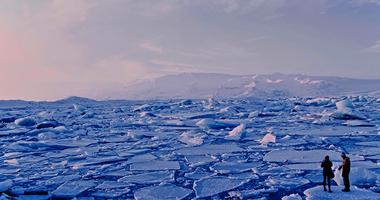
Switching the Philippines to Renewable Energy – One Business at a Time
How Climate Reality Leaders in the Philippines are helping businesses leave fossil fuels behind.
5 min read
By Ian Soqueño, The Climate Reality Project Philippines
Electricity rates in the Philippines are the highest in South East Asia because of an energy system dependent on fossil fuels. Historically, about 78% of our energy mix is sourced from fossil fuels, which are mostly imported, leaving us vulnerable to global market price volatilities and energy crises.
Today, that picture is beginning to change, thanks in part to the efforts of Climate Reality Leaders.
Driven by the unreliability of coal and a growing interest in renewable energy, businesses in the Philippines are increasingly turning to the government's Green Energy Option Program (GEOP).
GEOP provides 100% renewable energy access to consumers with an annual average peak demand of at least 100 kilowatts (roughly US $3,235 in a monthly electricity bill) and above to make the switch to renewable energy without upfront costs. Potential consumers are hospitals, hotels, factories, condominiums, and offices.
In practice, this allows an eligible consumer to switch from being tied to their distribution utility (whose power supply is mostly contracted from fossil fuel companies) to sourcing power directly from licensed renewable energy suppliers. On top of the climate benefits, these suppliers may also offer cheaper rates, saving consumers on their monthly bills.
This simple-yet-unique feature of GEOP is unprecedented in the country. And it’s the very reason why Climate Reality Philippines has been working since 2021 to raise awareness of the program and encourage consumers across sectors to make the switch.
Building Demand for Clean Energy
The first step was to get the word out about the incredible opportunity on savings.
At Climate Reality Philippines, our initial strategy was to train regional campaigners to raise awareness and encourage eligible consumers to participate in GEOP. We held five regional movement-building workshops training Climate Reality Leaders and energy advocates to spread the word. As our force multipliers, they helped build the demand for 100% renewable energy access across the country.
Some did more than building demand.
One Climate Reality Leader helped the Regional Development Council (RDC) – the highest planning and policy-making body of a region – in Central Visayas to develop a resolution enjoining local government units and public and private entities to support GEOP and accelerate climate action. The resolution began a domino effect, with RDCs in Western Visayas, Davao, SOCCSKSARGEN, and CARAGA adopting similar measures promoting the program within their regions.
These resolutions are a testament of the demand for GEOP and its benefits to its consumers. Since its launch in 2021, GEOP has shown that renewable energy is cheaper, cleaner, and more reliable than fossil fuels. Early switchers have witnessed significant benefits:
- A hotel saved PhP7.8 million (over US$123,000) in just 1.5 years.
- A telecommunications giant’s offices and data centers and a residential condominium have reduced power costs by at least 10%.
- Automotive companies and a food manufacturer have saved about PhP500,000 (US$8,500) and PhP100-200,000 (US$1,700–3,400) a month, respectively.
- An industrial park is experiencing even greater savings, reducing power operational expenses by 30% to 40% per month.
- An ice manufacturing plant participating in the GEOP is now considering expanding its business after seeing huge savings from the program.
These are only a few testimonials among the current roster of over 350 GEOP consumers. But the socioeconomic benefits are clear, and those that have switched earlier on have been able to enjoy these benefits longer than those that are only beginning to switch now.
While the program offers clear benefits, participation still remains low. To address this, we’re collaborating with the government to refine GEOP policies and implementation and attract a wider range of participants on both the supply and demand sides.
Series of IEC Campaigns on GEOP and other Voluntary RE Programs
We wanted to know why there’s low participation in the program. To get answers, we surveyed over 400 businesses and companies about their awareness and needs to participate in GEOP. The summary report of the survey was launched in November 2023 to the members of the Institute of Corporate Directors.
Then it was time to bring the results to policymakers. From April to May of this year, the Philippine Department of Energy held a series of IEC Campaigns on GEOP and other Voluntary RE Programs in four ecozones or developed areas with high economic activity. The Department invited Climate Reality Philippines to present the findings and recommendations of our survey.
The Philippines has a target of increasing the share of renewables in the energy mix to 35% by 2030 and to 50% by 2040—among the most ambitious in the Southeast Asia region. But a target only works if there’s a plan to reach it. That’s why we welcome the government’s commitment to promote renewable energy programs – like GEOP – that can help us get there.
Critically, our partnership didn’t end with the survey. We recently met with officials from the Department of Energy to raise issues and provide recommendations that we believe will increase the number of suppliers and consumers participating in the program.
- Additional Option for Backup Power: We recommended allowing renewable energy suppliers to access the Wholesale Electricity Spot Market (WESM) for backup power. This leverages the market's priority dispatch for renewables, ensuring greater reliability for end-users while maximizing renewable energy utilization.
- Demand Aggregation: We proposed enforcing the demand aggregation mechanism. GEOP only allows for one meter per end-user, so entities with separate meters within the same building or complex would not qualify or must register separately. Aggregating meters would help more entities meet the 100-kilowatt threshold, thereby increasing the number of eligible customers in GEOP.
- Accessibility of Load Profile Data: Finally, we advocated for regulations that ensure consumers have access to their load profile data. This will help renewable energy suppliers assess whether they can take the consumer as their customer. Accessing this data from distribution utilities by GEOP-eligible customers, however, is expensive. Therefore, regulating the price or making it free will encourage more consumers and suppliers to enter into a GEOP contract.
The DOE has taken note of these recommendations, which will be part of the public consultation during the next four IEC campaigns in ecozones this year. It’s clear that the government already recognizes the huge demand for renewable energy through GEOP and that policy amendments are necessary to encourage more renewable energy suppliers to cater to more customers.
REalize for Hospitals
It’s not only companies, schools, hotels, and government offices that are demanding renewable energy. Now, hospitals – and even the Philippine Department of Health – are also joining the call and collaborating with the Department of Energy to expedite the transition towards renewable energy through GEOP.
To date, public hospitals wanting to join the program have faced a long government procurement process that discourages many. Fortunately, the DOE recognizes this barrier and has committed to revisiting and improving existing rules and policies to facilitate easier access, especially for hospitals.
For Climate Reality Philippines, raising awareness about GEOP has been the easy part. The challenging part – and our top priority – is now fully unlocking its potential by gathering insights from participants and adopting policies to improve implementation.
As the government recognizes us as a partner in this cause, we remain committed to supporting the program and empowering more entities to choose cheaper, cleaner, and more reliable power in renewable energy through GEOP.
To learn more and help spread the word about clean energy opportunities through GEOP and other initiatives in the Philippines, visit The Climate Reality Project Philippines website.




